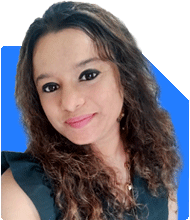Dear Sir,please note i ha e a home loan of 90 lkhs and 9.15 lakh car loan. Im earning 4 lakhs per month. Also the rent of flat is 1.05 lakhs. Invested 1 lakhs in stocks and 1 lakh in Mutual funds. I have 2 kids with a yearly expenditures of 8 lakhs.Kindly advise on how to save and where to save.
Ans: You have a high income, which is encouraging. At the same time, your home and car loans are quite significant. Your family responsibilities and lifestyle expenses also need strong planning.
Let’s now review your situation from every angle to create a sustainable saving and investment plan.
Understanding the Current Picture
Your gross income is Rs 4 lakhs monthly.
Your rental income is Rs 1.05 lakhs monthly.
This gives you a total monthly inflow of Rs 5.05 lakhs.
However, two large loans weigh on this cash inflow:
Home loan: Rs 90 lakhs
Car loan: Rs 9.15 lakhs
You've started investments in equity and mutual funds with Rs 1 lakh each. That’s a good beginning.
Your children’s annual cost is Rs 8 lakhs, around Rs 67,000 monthly. It’s essential to protect their needs through planned savings and not impulse expenses.
Cash Flow and Expense Discipline
Let's now focus on where your income is going.
You didn’t mention your monthly EMI amount. But for Rs 90 lakhs home loan, even with a long tenure, EMI could easily exceed Rs 80,000.
Car loan EMI would be another Rs 20,000 to Rs 25,000 minimum.
Add lifestyle and household expenses (excluding children) of Rs 1 lakh monthly.
That means your monthly outgo might be:
Home loan EMI: Rs 80,000
Car loan EMI: Rs 25,000
Household and lifestyle: Rs 1,00,000
Children’s expenses: Rs 67,000
Total monthly outgo = Around Rs 2.72 lakhs
This means you have around Rs 2.33 lakhs remaining (from Rs 5.05 lakhs total income).
This is a very healthy surplus.
Now let us focus on how to use this surplus for your future goals.
High-Priority Goals to Address
Before we talk about investing, fix these urgent gaps:
Emergency Fund: Minimum Rs 5 lakhs should be parked in liquid or ultra-short-term debt funds.
Term Insurance: If you don’t have a large-term insurance cover, take one today. It should be at least 10-15 times your annual income.
Health Insurance: A family floater of Rs 15 to 20 lakhs is important beyond your employer coverage.
These are not expenses. These are protection pillars for your family and future.
Action Plan for Loan Management
Home loan is a long-term burden. But it gives tax benefits and also serves as a forced savings tool. Yet, it is wise to reduce the burden gradually.
Car loan offers no tax benefit and is depreciating debt. Settle this early.
Suggestions:
Use your Rs 2.3 lakh surplus wisely each month.
First 3 months, build emergency fund of Rs 5 lakhs.
Then, from month 4 onwards, use Rs 75,000 each month to prepay car loan.
You can close car loan in about 12 months.
After car loan is cleared, use that Rs 75,000 monthly to partly prepay your home loan.
Keep Rs 1.5 lakhs monthly for investments once emergency and car loan are sorted.
This approach clears bad loan faster and lightens monthly EMI load without stress.
Building Your Investment Strategy
You are already invested in equity and mutual funds. But Rs 2 lakhs invested is just a start. You can do much more.
Please avoid direct stocks unless you have time and skill to monitor markets daily. Stick to mutual funds through a Certified Financial Planner (CFP).
Invest via regular plans through MFDs with CFP credential. Avoid direct funds.
Why? Let us explain:
Direct funds look cheaper but offer no human guidance.
You lose the benefit of rebalancing support and behaviour coaching.
Regular plans with CFP-MFD ensure your money is actively tracked.
You receive tax advice, review calls, goal updates, and exit planning.
Avoid index funds:
They blindly follow the market and don’t adjust to changing conditions. In volatile times, active funds outperform passive ones.
Also, index funds tend to carry heavy exposure to few large companies. This leads to concentration risk.
Active funds managed by skilled professionals give better long-term results with lower risk.
Where to Invest Monthly
Once emergency fund and car loan are handled, your monthly investable surplus will rise to Rs 2.25 lakhs.
Here’s a diversified way to deploy:
Rs 60,000 in large and flexi-cap funds
Rs 40,000 in mid and small cap funds
Rs 25,000 in hybrid equity funds
Rs 25,000 in balanced advantage or multi-asset funds
Rs 25,000 in debt funds or short duration
Rs 50,000 in goal-based child education funds
Balance your risk and time horizon with this mix.
Each of these can be regular plans with a CFP’s support. Review performance every 6 months.
Children’s Future Planning
Rs 8 lakhs annual cost now will rise steadily due to inflation.
Two major milestones to save for:
Higher education: Starts in 8-10 years
Marriage: Starts in 15-20 years
Start SIPs in child-focused mutual funds today.
You can allocate Rs 50,000 monthly across both kids.
Also consider a Sukanya Samriddhi Yojana if both are daughters.
Don’t rely on insurance policies for children’s future. They give poor returns and lock-in money.
If you already have any ULIPs or LIC endowments, please surrender and reinvest in mutual funds. Don’t mix insurance and investment.
Tax Planning Suggestions
You earn Rs 48 lakhs yearly (Rs 4 lakhs x 12).
Use Rs 1.5 lakhs 80C via PPF, ELSS, or EPF contributions.
Buy Rs 50,000 NPS to claim extra under Section 80CCD(1B).
Health insurance premiums can offer another Rs 25,000 to Rs 50,000 deduction.
Interest on home loan gives Rs 2 lakh deduction under 24(b).
Also claim HRA if applicable.
These strategies will reduce your tax outgo and enhance savings.
Sensible Investment Vehicles to Avoid
Please stay away from:
ULIPs: Low return, high cost
Endowment plans: Poor liquidity and low IRR
Annuities: Low returns, taxed heavily
Index funds: No flexibility, lack of downside protection
Direct mutual fund investments: No advice, no handholding, no goal clarity
Choose guided investing over low-cost isolation.
Use the power of compounding with support from certified professionals.
Build a Retirement Foundation Now
Though not your immediate priority, retirement planning must begin today.
With Rs 2.25 lakhs surplus monthly, you can allocate Rs 40,000 purely for retirement.
Invest in equity-oriented mutual funds with regular review and rebalancing.
Start with a 20-year horizon in mind. Build a Rs 5 crore plus retirement corpus without stress.
Monitoring and Review Strategy
Every investment decision must be reviewed every 6 months.
Also, every year review these:
Are you progressing towards child’s goals?
Is your debt coming down as planned?
Are your mutual fund SIPs performing better than benchmarks?
Is your asset allocation still matching your risk appetite?
A Certified Financial Planner can help monitor, report, and update your plan on time.
Don’t try to manage everything alone.
What You Should Immediately Do
Here’s a step-by-step to-do list:
Build Rs 5 lakhs emergency fund in 3 months
Review and buy personal term and health insurance
Start prepayment of car loan from month 4
Begin SIPs of Rs 1.5 lakhs monthly across mutual fund categories
Allocate Rs 50,000 for children’s education investments
Surrender any LIC, ULIP, or endowment plans if you hold
Avoid direct and index mutual fund plans
Choose regular funds via MFD with CFP
Keep Rs 40,000 monthly for retirement corpus
Conduct semi-annual reviews with a Certified Financial Planner
Finally
Your income gives you the power to live well and save wisely.
But loans, child responsibilities, and inflation demand discipline.
With a clear investment strategy, professional help, and patience, you will build long-term wealth.
Don’t chase random products. Choose clarity, consistency, and certified guidance.
Start early, stay focused, and involve your spouse too in planning.
You don’t need to take extreme risks. Even balanced steps can secure your future.
Best Regards,
K. Ramalingam, MBA, CFP,
Chief Financial Planner,
www.holisticinvestment.in
https://www.youtube.com/@HolisticInvestment













.jpg)













